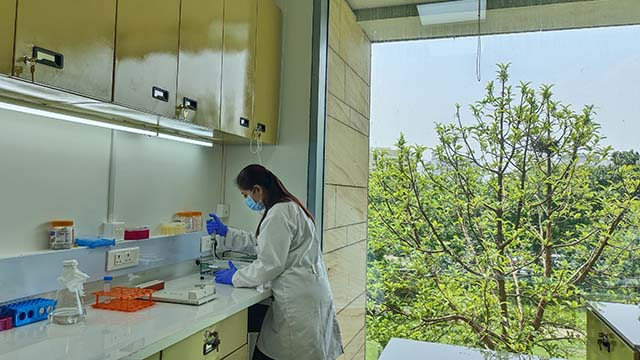Blood Group Genotyping
Sample requirements:
At least 6 mL of EDTA blood sample is required (two samples, 6 mL each would be preferred). EDTA samples should be sent in coolant gel pack to maintain the temperature around 2-8ᴼC along with the properly filled up case record form. The blood samples should be reached to the TMC blood centre within 48 hours of collection.
Blood group antigens that are being determined by genotyping:
- Rh D, Rh C, Rh c, Rh E, Rh e, Rh Cw,
- KEL1 (Kell), KEL2 (Cellano),
- Jka (Kidd a), Jkb (Kidd b),
- Fy a (Duffy a), Fyb (Duffy b),
- M, N, S, small s,
- Do a (Dombrock a) and Do b (Dombrock b),
- Vel+/Vel-
Instruction for sending samples
- Send the sample along with the hard copy of Case Record Form, Medical Registration Form and a copy of self-attested Aadhar Card to the shipping address.
- Send the soft copy of the above mentioned documents to this email id: blood-bank@tmckolkata.com
FAQs about red cell genotyping
Q1. What is blood group genotyping?
It is a molecular method of blood grouping where DNA is extracted from blood (white blood cells) and amplified by using sequence specific primers to predict certain blood group antigens present on the red blood cell membrane. It is based on the PCR technique. The final amplified DNA segments are separated by gel electrophoresis and then the final report is generated.
Q2. How is it different from red cell phenotyping?
Yes, it is different. The red cell phenotyping is based on the hemagglutination principle to detect certain blood group antigens on the red blood cells. On the contrary, red cell genotyping is a DNA based technique.
Q3. Is it done in the donor or patient?
It can be done both in donors or patients. Here at TMC blood centre tests are predominantly performed in patients.
Q4. In which group of patients the genotyping is performed?
- Patients who have been recently transfused (last 3 months)
- Patients who are DAT positive (can’t be phenotyped)
- In alloantibody identification where serology is inconclusive
- Patient who are on anti-CD38 or anti-CD47 drugs
Q5. What are the benefits to these patients?
By genotyping the phenotype (most of the clinically significant red cell antigens) can be predicted in the recently transfused or AIHA patients. By transfusing phenotype matched red cells to these patients, development of further alloantibodies could be prevented and transfusion management can be optimized.
